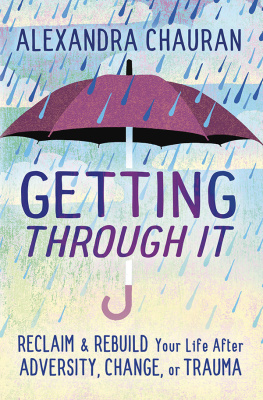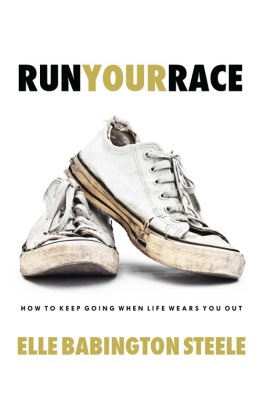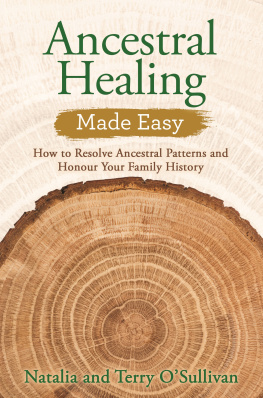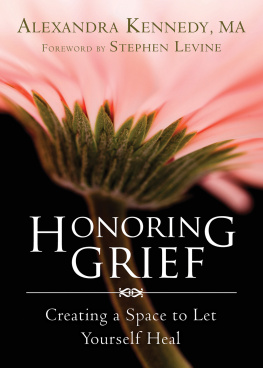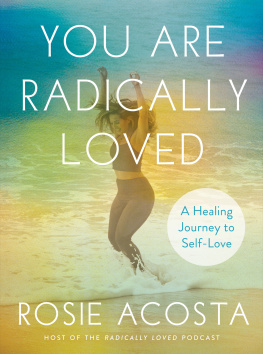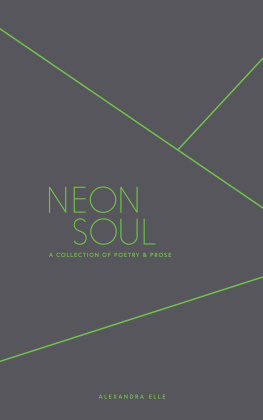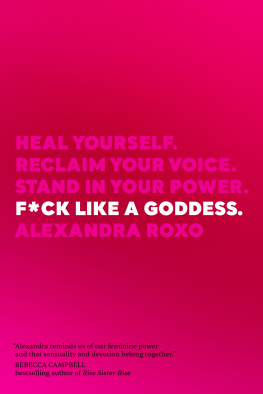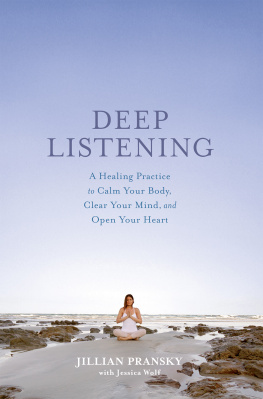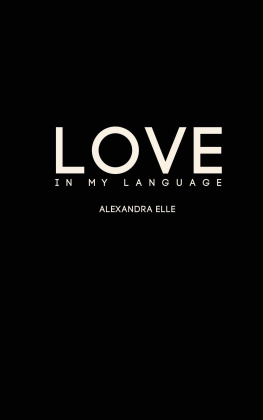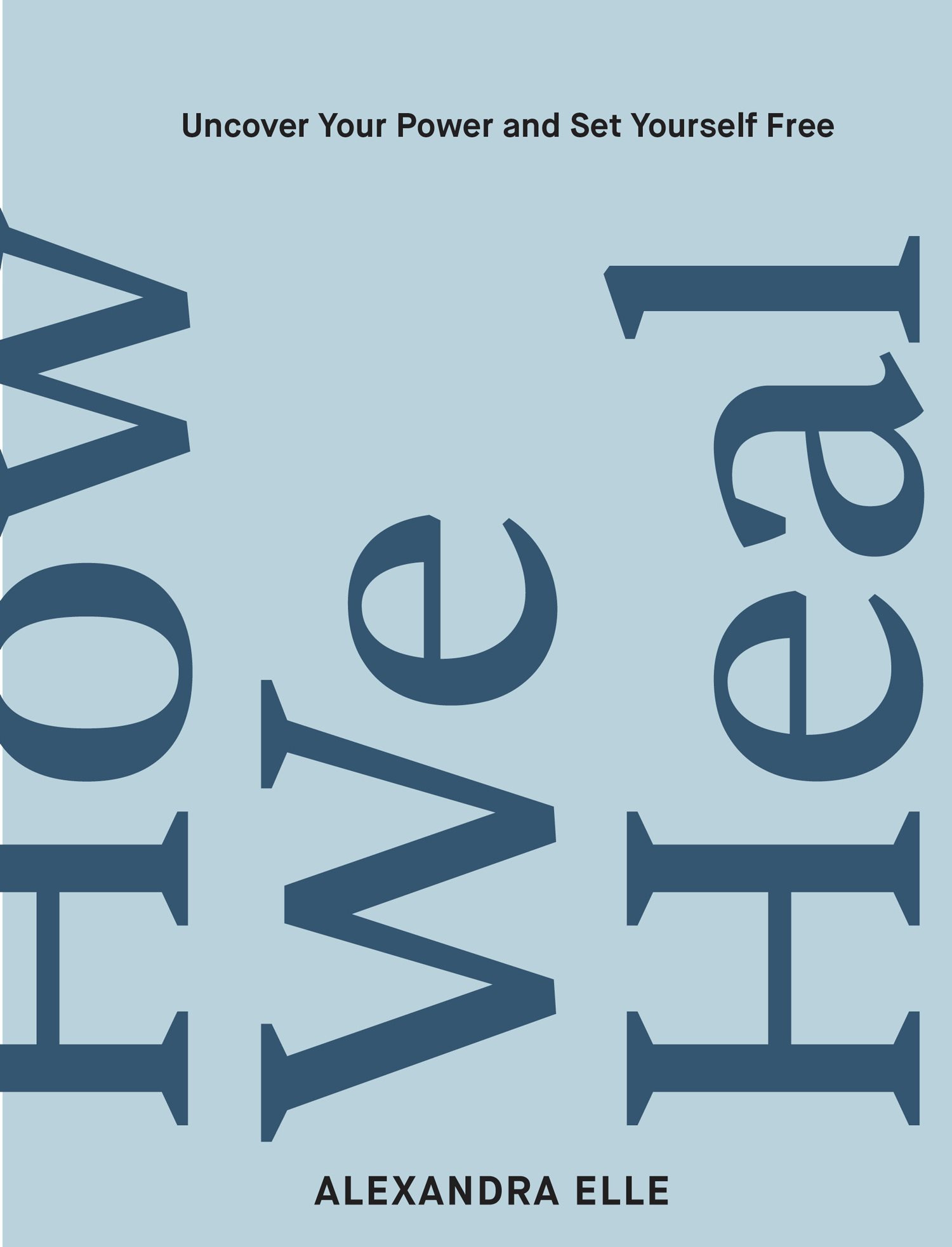Contents
Guide
Pagebreaks of the print version
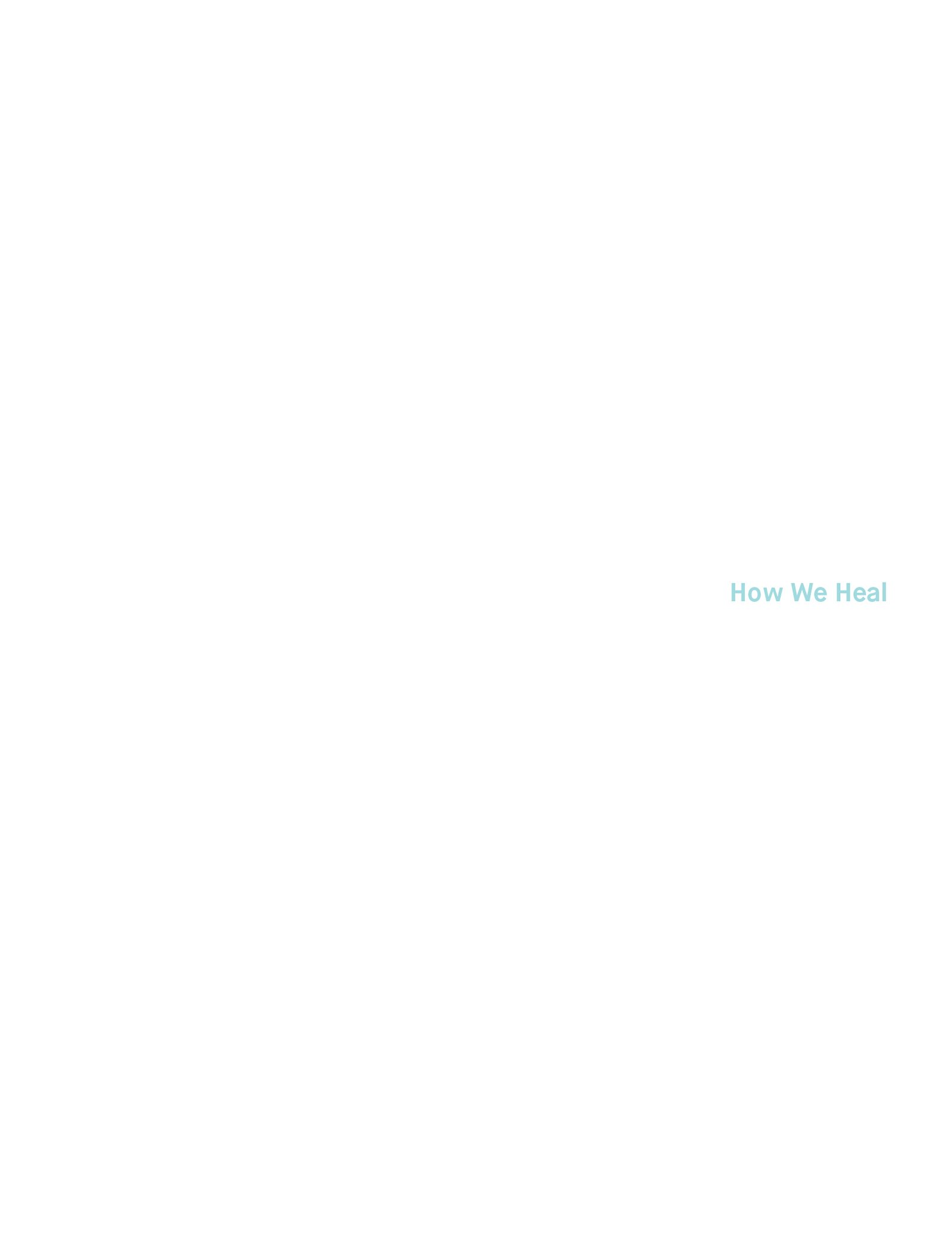

Text copyright 2022 by Alexandra Elle.
Illustrations copyright 2022 by Laxmi Hussein.
All rights reserved. No part of this book may be reproduced in any form without written permission from the publisher.
Library of Congress Cataloging-in-Publication Data available.
ISBN 978-1-7972-1626-3 (hardcover)
ISBN 978-1-7972-1902-8 (ebook)
Design by Vanessa Dina.
Editorial direction by Rachel Hiles and Sarah Billingsley.
Typesetting by Howie Severson.
Chronicle Books LLC
680 Second Street
San Francisco, California 94107
www.chroniclebooks.com
For my readers
When we heal ourselves, we heal our lineage.
Healing is an act of community care.
For my daughters
I love you beyond words. You are the reason I heal.
AUTHORS NOTE: WHY WE HEAL
For years I have been teaching folks from all walks of life how to use writing as a way to heal. Ive led self-care workshops throughout the world, and Ive helped thousands of people on their healing journeys. And yet this book almost didnt happen. My self-doubt and imposter syndrome were intense. I found myself stuck in a negative thought spiral, asking myself questions like, Who do you think you are? What makes you think youre qualified to write this? Youre no therapist, no doctor, no scholar with a research background. Your experience is not enough.
With that negative self-talk in tow, I would go to my computer and try my hand at writing a book about healing and self-discovery and self-trust. Every time I sat down to write, my eyes would burn. My heart would beat fast, and my palms would sweat. Anxiety would win time and time again. Most days, walking away felt safer than trying. As I walked away, my self-doubt would say, See? Youre a quitter. Thats why this isnt for you. Youre not really made for this work . Wowintense, right? The stories we tell ourselves can make or break us.
As I started to peel back the layers of why I was trying to talk myself out of writing this book, I began to realize I was concerned about the wrong thing: I was too concerned that my experience isnt enough when it absolutely is. And while I may not have a degree in psychology or a full-time research job, I have real life lived under my belt. Ive been hurt, and I have healedthat counts for something. I realized my role is to help people show up authentically in their healing in ways that leave them better than they were before reading this book.
Im sharing this story because I know for a fact that we all have these moments of doubting who we are, or even forgetting who we are and how far we have come. Sometimes we are our harshest critic. Each of us, at one point in time, has made up stories in our head about who we arent instead of focusing on the good of who we are. Maybe youre reading this and thinking, Someone has actually told me those negative things about myself and my capabilities, and I believed them . No matter where your small self-view comes from, you must remember that in healing and releasing untrue stories and outside projections, shrinking and walking away wont serve you. Healing requires us to get in touch with our true selvesand that, my friends, requires us to show up and be big.
Ive been working on my inner critic in therapy for the past couple of years, and healing the part of my mind that tells me I am not good enough is a work in progress. I know Im not alone there. Ive had the honor of facilitating thousands of people on their writing-to-heal journeys. The expansive way that people showed up on the pages of their journals blew my mind each and every time. I saw that, through writing, people could take an honest look at their pain in a way that they never could before. Everyone says the same thing: I want to find myself, heal my heart, and let go of the things that are getting in the way of that. But so often, people choose not to look at their emotional wounds, traumas, and shortcomings because they dont know how to heal themselves after uncovering the mess.
I get that. I turned away from my pain for years. Turning away led to a lot of destructive behaviors like self-harm, anxiety, depression, and having a child at eighteen because I was looking for love, comfort, and attention in all the wrong places. Healing what tears us open is challenging, but possible, work. Humans are complicated and flawed. Id like us to normalize that and be open to greeting our fear and imperfections right where they are.
My own healing journey has been rooted in writing to healthe practice of using writing to unpack my baggage, process my deepest emotions, and create a new narrative for my life. In my personal practice, writing shapes me, and it continues to be my permission to show up flawed and unsure while also holding space for gratitude, potential, and the recognition of how far Ive come.
Writing reminds me that I dont need to have my stuff together to start my healing. Instead, its a reminder to show up as I am with curiosity in hand, ready to take on whatever is in front of me on the page. It is a tool that reminds me that even in doubt, the work I need to do will meet me wherever I am. As I heal, I come to the page raw and honest and remember that I am not a victim of my thoughts. When I thought I couldnt get myself together enough to write this book, the pages of my journal allowed me to uncover not just my why , but also my why not . Clarity will always find us if we are curious and honest enough. But it wont be without struggle. Healing is slow and sacred work that we will all grapple with in our lifetimes.
The more I explore my own healing, and the longer I teach writing-to-heal courses, the more Ive discovered that trauma does not have to be our resting place. We can feel, address, and notice our pain without lying down in it and staying there. To me, that is what it means to walk through, or alongside, our healing, getting back up again whenever we stumble or fall. I used to think that was such a dragnot arriving at a destination of being healedbut the more I got to know myself and my pain points, the more I realized that what is necessary is choosing not to stay in the pit of my pain, looking at it for what it is, and using the tools I share here. There is no end point to healing.
Healing in the wellness community is often talked about as an end goal. The messaging suggests that if we can just heal and get over it (whatever it is), all will be well and good. But healing does not mean that you wont experience more suffering or tenderness around the original thing that hurt you. Healing is a forever thing, or like I say to my clients and students, a constant reminder to love and care for ourselvesan invitation to nurture ourselves just like we do everyone else.
We heal to make space, to redefine ourselves and our narratives. To expand and become better. To forgive, create new possibilities, and move forward. To build community and create bonds. We heal to release shame, manifest self-love, create autonomy, and begin again. We heal to redefine ourselves, face our fears, and develop self-trust. We heal to mend relationships and deepen connections with those around us. We heal to get free.
Healing creates a healthy sense of togetherness in a way that misery and brokenness cannot. I know this to be true because I spent years of my life trauma-bonding with people, and there was nothing healthy about that for them or me. I was codependent and trapped in emotional confusion. Sometimes we heal to prove a pointthere is often healing in the proving, changing, and having outsiders bear witness. There may be people in your life not ready to do their own healing work yet, but when they watch you change, break cycles, and start healing, it is almost like a permission slip of whats possible for their own lives.


